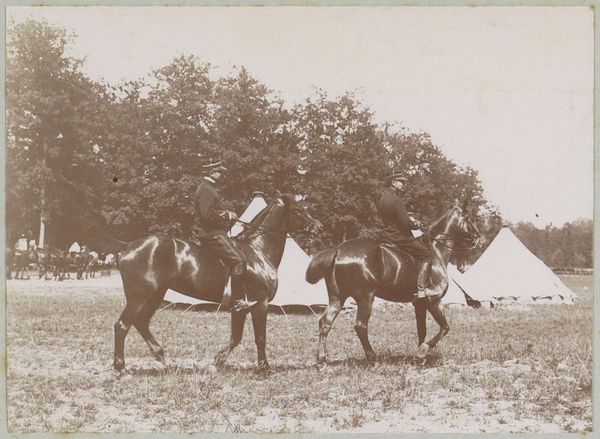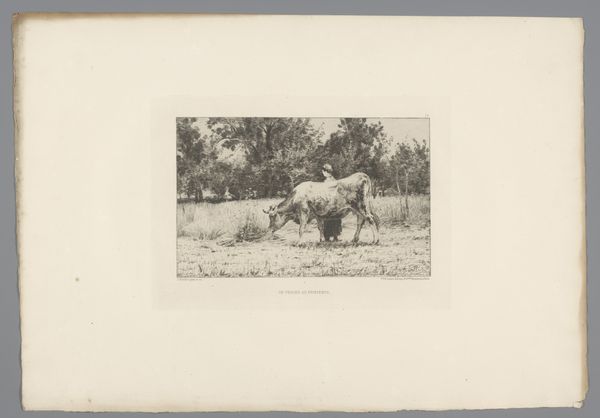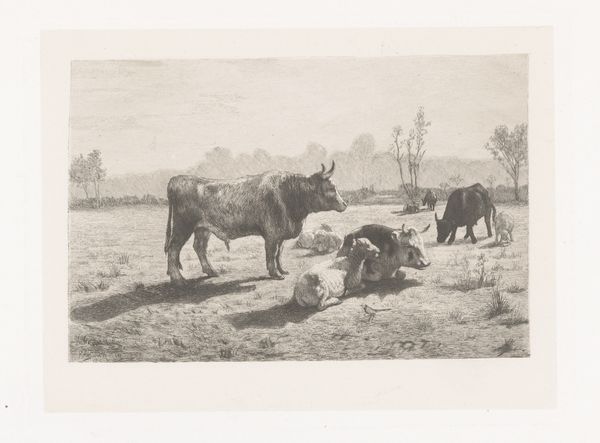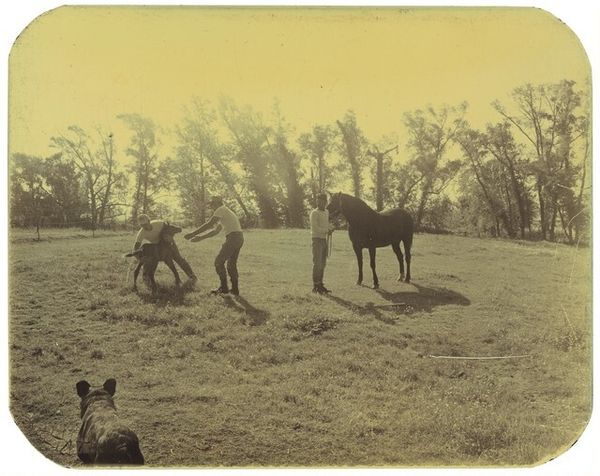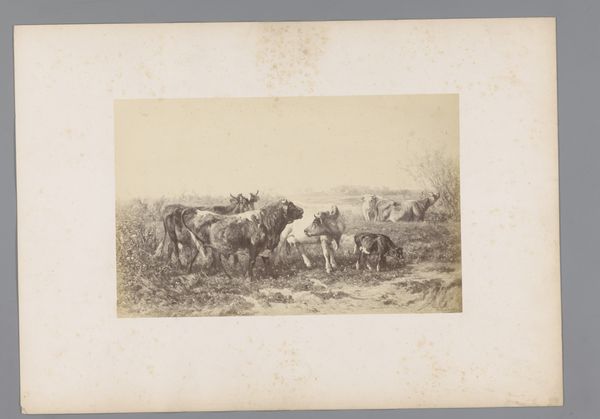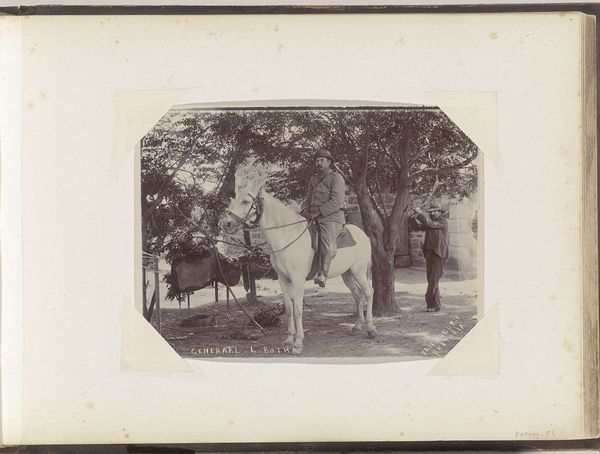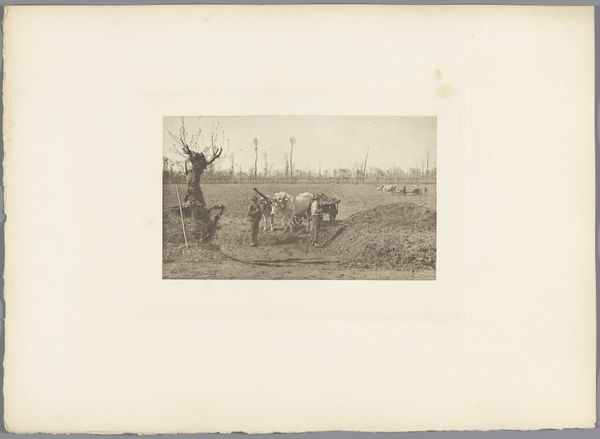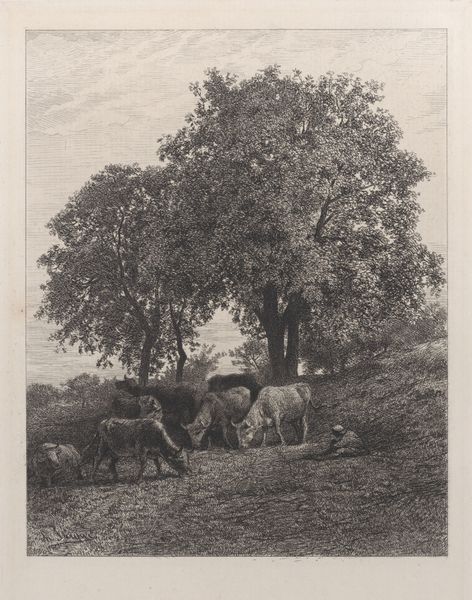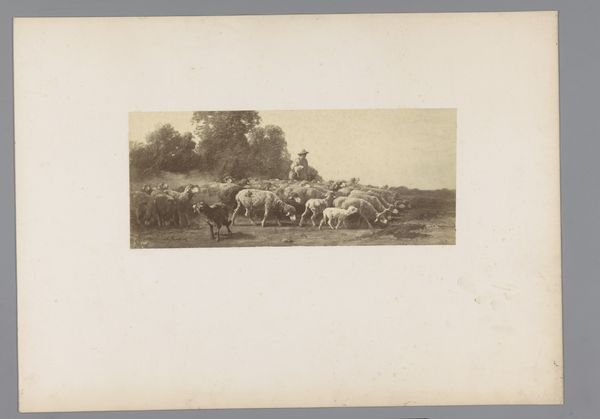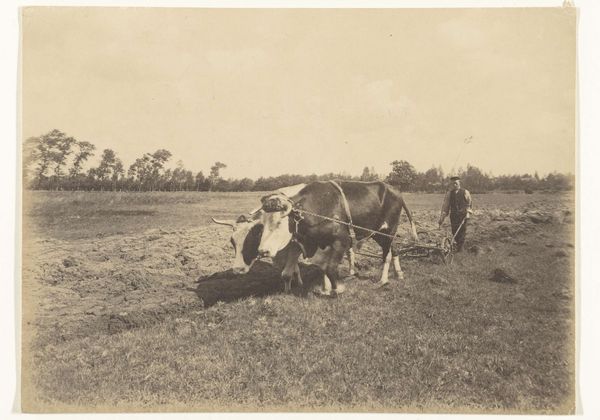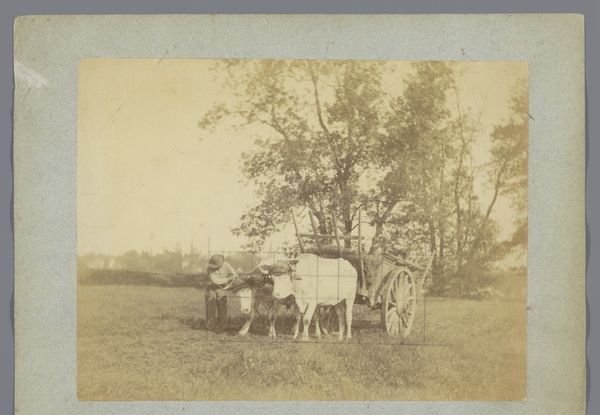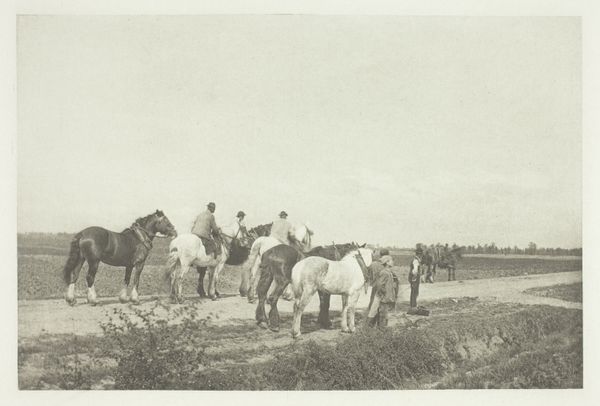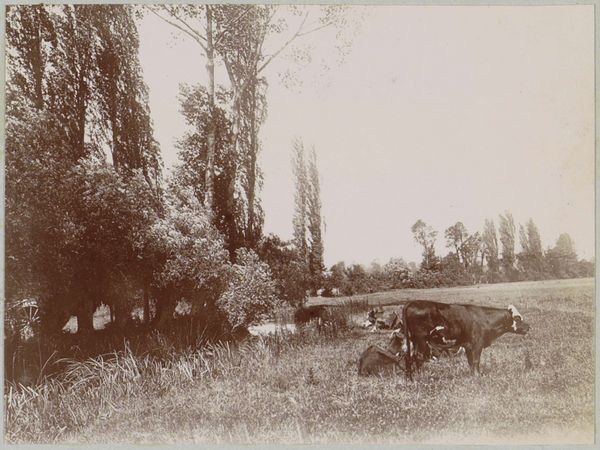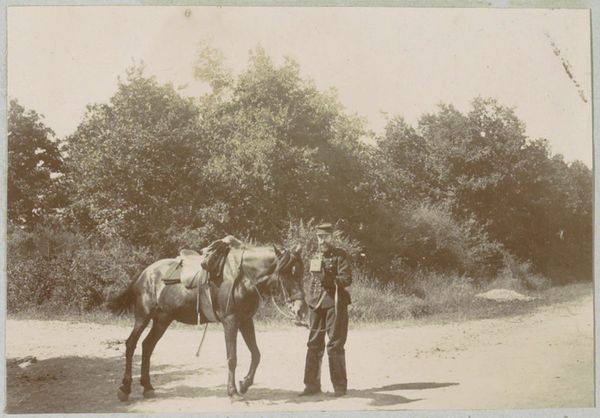
print, photography, gelatin-silver-print
#
print photography
#
natural tone
# print
#
impressionism
#
wedding photography
#
landscape
#
photography
#
england
#
gelatin-silver-print
#
realism
Dimensions: 11.9 × 18.3 cm (image/paper); 33.5 × 42.6 cm (album page)
Copyright: Public Domain
Editor: Here we have Peter Henry Emerson's "Colts on a Norfolk Marsh," a gelatin silver print dating possibly between 1883 and 1888. It's a hazy, dreamlike scene. What historical factors shaped its creation and reception? Curator: Emerson positioned himself against pictorial conventions dominant at the time. How do you see this challenging the established artistic norms within the photographic societies and exhibition spaces of Victorian England? This wasn’t simply about representing reality. It was a statement about the artistic possibilities of photography, staking its claim alongside painting, though it simultaneously reinforces class distinctions related to land and leisure. Editor: So, its aesthetic was inherently political? Was it perceived as a challenge to the art establishment? Curator: Precisely! Photography, in Emerson’s view, deserved recognition as fine art. This ambition drove his aesthetic choices. Notice the "naturalistic" approach— soft focus, carefully composed scenes depicting rural life. This contrasted sharply with staged studio portraits prevalent at the time. Furthermore, his subjects are working animals within what appear to be privately held, managed lands. This speaks to both prevailing aesthetic trends and England’s evolving class structures, which museums at the time reflected in their acquisitions. Editor: That’s interesting. I initially saw it as just a peaceful pastoral scene. Curator: The seemingly simple image is, in reality, participating in a larger cultural debate about the role of photography and the construction of English identity in late 19th century England. Consider also, for whom was Emerson creating his art? Whose stories are being told, and whose are absent? Editor: Understanding the cultural context really changes my perspective. I see now how even seemingly straightforward landscape photography can engage with really significant issues. Curator: Exactly. Looking at art through a socio-historical lens makes us more attuned to the complex narratives embedded within.
Comments
No comments
Be the first to comment and join the conversation on the ultimate creative platform.
